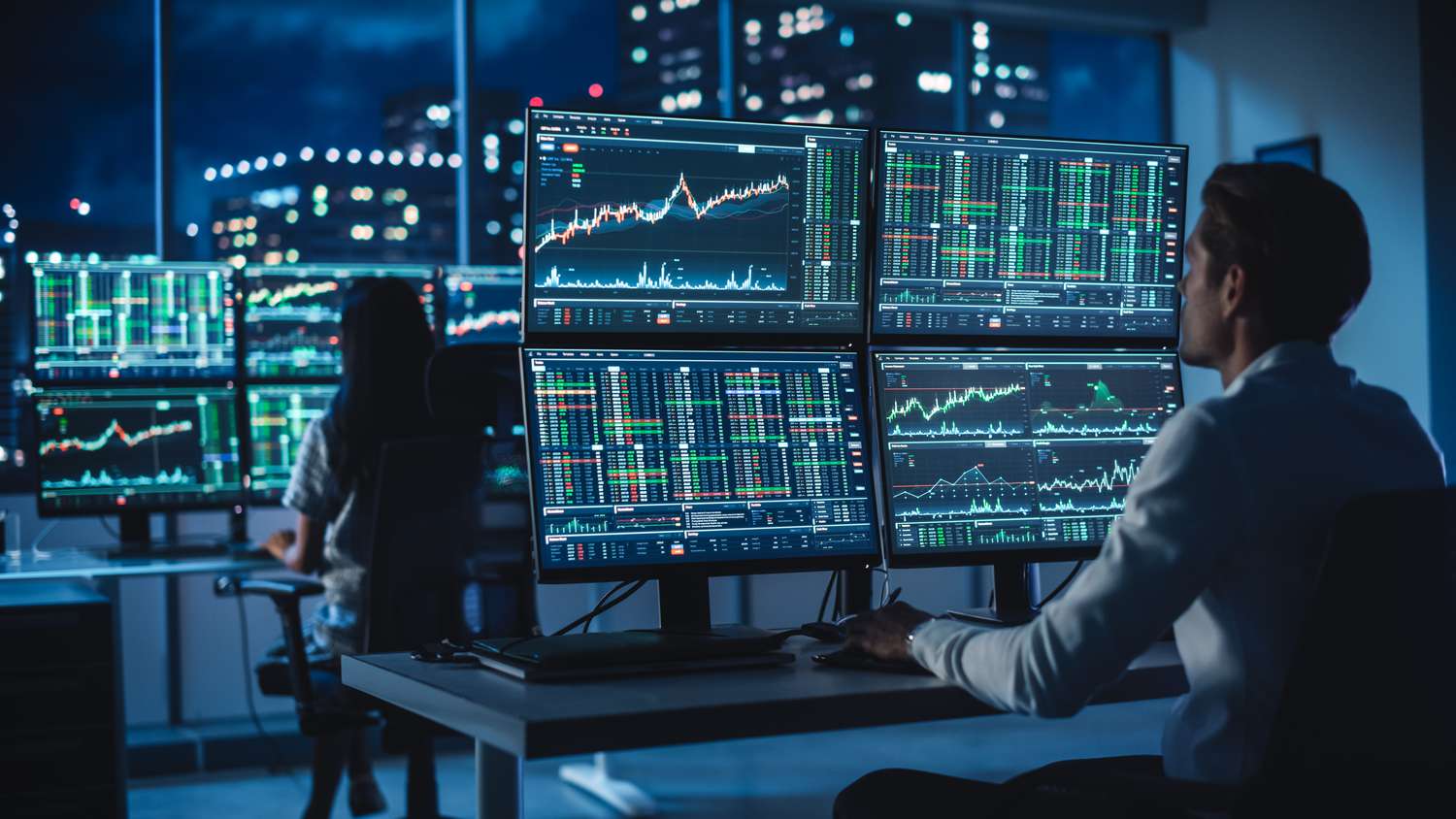Certainly! Below is a detailed 4,000-word article on Forex Trading, broken down into 20 paragraphs with headings.
Introduction to Forex Trading
Forex trading, also known as foreign exchange trading or FX trading, involves the buying and selling of currencies in the foreign exchange market. It is one of the largest and most liquid financial markets in the world, with an estimated daily trading volume exceeding $6 trillion. Unlike other financial markets, Forex operates 24 hours a day, five days a week, which allows traders to enter and exit positions at almost any time.
Forex trading is driven by the fluctuations in currency exchange rates, which are influenced by a variety of factors, including economic data, geopolitical events, and central bank policies. It offers immense opportunities for profit, but also comes with its fair share of risks. Understanding the fundamentals of Forex trading is crucial for anyone looking to get involved in this dynamic market.
1. The Basics of Forex Trading
At its core, Forex trading involves the exchange of one currency for another. The most commonly traded currencies are the U.S. dollar (USD), Euro (EUR), Japanese yen (JPY), British pound (GBP), and Swiss franc (CHF), among others. Currencies are always quoted in pairs, such as EUR/USD, GBP/USD, or USD/JPY.
Each pair represents the exchange rate between the two currencies. For instance, if the EUR/USD pair is quoted at 1.2000, it means that one Euro is worth 1.20 U.S. dollars. Traders buy a currency pair when they believe the first currency in the pair will rise in value relative to the second currency, and they sell it when they expect the opposite.
2. The Role of Currency Pairs in Forex Trading
In Forex trading, currencies are always traded in pairs. Each pair consists of a base currency and a quote currency. The base currency is the first currency listed in the pair, and the quote currency is the second one. The exchange rate tells you how much of the quote currency is required to purchase one unit of the base currency.
There are three types of currency pairs: major pairs, minor pairs, and exotic pairs. Major pairs involve the most liquid and widely traded currencies, such as EUR/USD, GBP/USD, and USD/JPY. Minor pairs, on the other hand, involve less frequently traded currencies, and exotic pairs involve currencies from emerging or smaller economies.
3. How the Forex Market Works
The Forex market is decentralized, meaning there is no central exchange where transactions are conducted. Instead, it operates through a network of banks, financial institutions, corporations, and individual traders. The market is over-the-counter (OTC), meaning that trades are conducted directly between parties via electronic platforms or over the phone.
This decentralized structure means that the Forex market has high liquidity, as there are always buyers and sellers available. Additionally, the market operates 24 hours a day, five days a week, which allows traders to participate at any time, regardless of their time zone.
4. Types of Forex Trading Strategies
Forex traders employ a variety of strategies to try and make profits in the market. Some traders prefer short-term strategies, such as scalping, while others may take a longer-term approach, such as swing trading or position trading. Each strategy has its own advantages and disadvantages, and the choice of strategy often depends on the trader’s risk tolerance, trading style, and time commitment.
- Scalping: A strategy that involves making a large number of small trades over a short period of time. Traders aim to profit from small price movements.
- Day Trading: Involves entering and exiting trades within the same trading day to avoid overnight risk.
- Swing Trading: A medium-term strategy that aims to capture price swings over several days or weeks.
- Position Trading: A long-term strategy where traders hold positions for weeks, months, or even years, based on fundamental analysis.
5. Fundamental Analysis in Forex Trading
Fundamental analysis is one of the key methods used by Forex traders to evaluate currencies. It involves examining the economic, social, and political factors that can influence the value of a currency. Traders who use fundamental analysis often focus on economic indicators such as GDP growth, employment data, inflation rates, and interest rates.
Central bank policies, geopolitical events, and trade relations also play a crucial role in currency price movements. For example, an interest rate hike by the U.S. Federal Reserve may strengthen the U.S. dollar, as higher interest rates tend to attract foreign investment.
6. Technical Analysis in Forex Trading
In contrast to fundamental analysis, technical analysis focuses on studying historical price movements and using chart patterns and technical indicators to predict future price action. Technical analysis is widely used by short-term traders and day traders who rely on price charts to make trading decisions.
Key technical tools used in Forex trading include moving averages, relative strength index (RSI), Bollinger Bands, and Fibonacci retracement levels. By identifying trends and patterns, traders can make educated guesses about where currency prices may go in the future.
7. Risk Management in Forex Trading
Risk management is an essential aspect of successful Forex trading. Without proper risk management strategies, even experienced traders can suffer substantial losses. One of the most important tools for risk management is the use of stop-loss orders, which automatically close a position when a currency pair reaches a certain price level.
Additionally, traders often use proper position sizing and leverage management to ensure that they are not overexposed to any single trade. It is important to never risk more than a small percentage of your total capital on a single trade, as even small losses can quickly add up.

8. Leverage in Forex Trading: Double-Edged Sword
Leverage allows traders to control a larger position than their account balance would normally allow. For example, a leverage of 50:1 means that a trader can control $50,000 worth of currency with just $1,000 of capital. While leverage can amplify profits, it also magnifies potential losses.
Using leverage effectively requires careful risk management and discipline. It is easy to become overconfident when profits are made using leverage, but it is crucial to avoid the temptation of taking excessive risks that can wipe out a trading account in a matter of minutes.
9. The Psychology of Forex Trading
Forex trading is not just about analyzing charts and economic data; it is also about managing emotions and staying disciplined. Trading can be highly stressful, and the emotional aspect of trading can often lead to poor decision-making.
Fear, greed, and overconfidence are common emotions that can cloud a trader’s judgment. Successful traders learn to manage their emotions and stick to their trading plan, regardless of market conditions. Developing a strong mental approach is just as important as having a solid trading strategy.
10. Choosing a Forex Broker
Choosing the right Forex broker is one of the most critical steps in becoming a successful trader. A reliable broker should offer a user-friendly trading platform, low spreads, a wide range of currency pairs, and strong customer support. Additionally, brokers should be properly regulated to ensure that they operate transparently and ethically.
It is also important to evaluate the broker’s fees, including spreads, commissions, and any other hidden costs. Many brokers offer demo accounts, allowing traders to practice and test strategies before committing real capital.
11. The Importance of Economic Indicators in Forex Trading
Economic indicators are data releases that provide insight into the health of a country’s economy and can impact the value of its currency. Some of the most important indicators include:
- Gross Domestic Product (GDP): Measures the overall economic output of a country.
- Inflation Rate: Reflects the rate at which prices for goods and services are rising.
- Employment Data: Employment rates and non-farm payroll numbers are key to assessing economic growth.
- Interest Rates: Central bank decisions on interest rates can significantly influence currency values.
Forex traders closely monitor these indicators to predict how they will impact currency markets and adjust their strategies accordingly.
12. Forex Trading Hours and Market Sessions
One of the unique aspects of Forex trading is that the market operates 24 hours a day, five days a week. This allows traders from around the world to trade at any time, regardless of their location. However, the Forex market is divided into four major trading sessions:
- Sydney Session: Opens at 10:00 PM GMT and closes at 7:00 AM GMT.
- Tokyo Session: Opens at 12:00 AM GMT and closes at 9:00 AM GMT.
- London Session: Opens at 8:00 AM GMT and closes at 5:00 PM GMT.
- New York Session: Opens at 1:00 PM GMT and closes at 10:00 PM GMT.
The London and New York sessions are the most active, and volatility tends to be highest during these times.
13. The Impact of Global Events on Forex Trading
Geopolitical events, natural disasters, and other global developments can have a profound impact on Forex markets. Events such as elections, trade wars, and military conflicts can cause significant volatility, creating both risks and opportunities for traders.
For example, a sudden change in political leadership can lead to shifts in economic policies that affect a country’s currency. Similarly, natural disasters like hurricanes or earthquakes can disrupt supply chains and economic activity, impacting the value of local currencies.
14. Carry Trade Strategy in Forex
The carry trade strategy involves borrowing funds in a currency with a low interest rate and investing them in a currency with a higher interest rate. The idea is to profit from the interest rate differential between the two currencies. This strategy is typically used by traders who are looking for long-term gains.
For example, if a trader borrows Japanese yen (JPY) at low interest rates and converts it into Australian dollars (AUD) with higher interest rates, they can earn the difference in interest, in addition to any potential capital gains from currency price movements.
15. Automated Trading and Expert Advisors (EAs)
Automated trading, also known as algorithmic trading, is becoming increasingly popular among Forex traders. Traders can use Expert Advisors (EAs) to execute trades automatically based on predefined rules and algorithms. These automated systems can monitor the market 24/7, executing trades faster and more efficiently than human traders.
EAs are particularly useful for implementing complex strategies and managing large amounts of data. However, they are not foolproof, and traders must carefully test and monitor their systems to ensure they function as intended.
16. The Risk of Overtrading in Forex
Overtrading occurs when a trader takes too many positions or trades without adequate planning or analysis. This is often driven by emotions, such as greed or the desire to recover from previous losses. Overtrading can lead to poor decision-making, excessive risk-taking, and significant financial losses.
To avoid overtrading, traders should stick to their trading plan, focus on high-probability setups, and always ensure they are managing their risk appropriately.
17. Trading with Indicators: Moving Averages, RSI, and MACD
Technical indicators are tools used to help traders analyze price movements and identify potential trends or reversals. Some popular indicators include:
- Moving Averages: Smooth out price data to help identify the direction of the trend.
- Relative Strength Index (RSI): Measures the speed and change of price movements to identify overbought or oversold conditions.
- Moving Average Convergence Divergence (MACD): A trend-following momentum indicator that helps identify changes in the strength, direction, and
